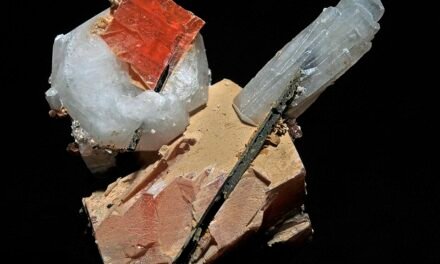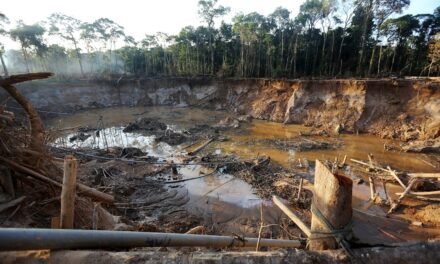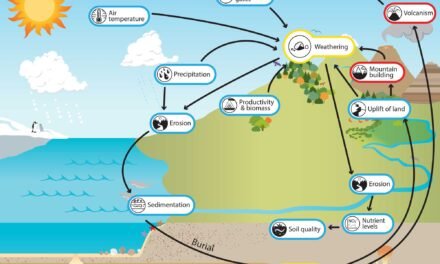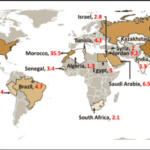Phosphate minerals are a group of naturally occurring minerals that contain the phosphate ion (PO43−\text{PO}_4^{3-}PO43−), often combined with various metals or other elements. These minerals are significant in the mining industry due to their role as the primary source of phosphorus, a critical nutrient for plant growth. Phosphorus is a key component of fertilizers, which are vital for global agriculture, making phosphate mining an essential industry for food production and agricultural sustainability.
What Are Phosphate Minerals?
Phosphate minerals are crystalline compounds composed of phosphorus combined with metals such as calcium, iron, and aluminum, among others. The most common phosphate minerals include:
- Apatite: The most abundant and economically important phosphate mineral, apatite is typically found as calcium phosphate (Ca₅(PO₄)₃(F,Cl,OH)) and occurs in a variety of forms, including fluorapatite, chlorapatite, and hydroxyapatite. Fluorapatite is the most commonly mined form for fertilizer production.
- Vivianite: A hydrous iron phosphate (Fe₄(PO₄)₃·8H₂O), typically found in sedimentary and volcanic rock formations.
- Monazite: A rare phosphate mineral of rare earth elements (REE), often containing cerium, lanthanum, and thorium, though it’s not commonly used in fertilizer production.
- Struvite: A phosphate mineral composed of ammonium magnesium phosphate, found in some wastewater treatment processes as a byproduct.
Why Are Phosphate Minerals Significant in the Mining Industry?
Phosphate minerals are crucial in the mining industry due to their role in producing phosphorus for fertilizers and other agricultural applications. Here’s a breakdown of their importance:
1. Fertilizer Production: The Primary Source of Phosphorus
Phosphorus is one of the three primary macronutrients required by plants for growth, alongside nitrogen and potassium. Phosphorus is a critical component in processes like:
- Energy transfer within cells (e.g., ATP – adenosine triphosphate).
- DNA and RNA synthesis.
- Root development and flowering in plants.
Phosphorus is typically added to soils through chemical fertilizers made from phosphate rock, which is primarily mined for its apatite content.
- Superphosphate: A common phosphate fertilizer produced by treating phosphate rock with sulfuric acid to produce single superphosphate (SSP) or triple superphosphate (TSP).
- Ammonium phosphate fertilizers: Made by reacting phosphate rock with ammonia, producing fertilizers such as monoammonium phosphate (MAP) and diammonium phosphate (DAP).
The global demand for phosphatic fertilizers is driven by the need to support food production in an ever-growing world population. Without an adequate supply of phosphorus from phosphate minerals, global agriculture would face a severe nutrient deficit, impacting food security.
2. Soil Fertility and Agriculture
Phosphate fertilizers derived from phosphate minerals are essential for improving soil fertility and boosting agricultural productivity. Phosphorus helps plants by:
- Promoting root development, which is essential for the uptake of other nutrients.
- Enhancing flower and fruit development, which directly affects crop yield.
- Increasing drought resistance and improving overall plant health.
Countries with large agricultural industries rely heavily on phosphate rock to manufacture fertilizers and maintain soil health, making phosphate minerals indispensable for sustainable farming practices.
3. Animal Feed and Supplements
In addition to fertilizers, phosphate minerals are also essential for producing phosphate additives in animal feed. Phosphorus is necessary for:
- Bone and teeth development in animals.
- Energy metabolism and cellular functions.
- Milk production in dairy animals.
Phosphate supplements are often added to the feed of livestock such as cattle, poultry, and swine to maintain animal health and optimize production in the agricultural industry.
4. Industrial Applications Beyond Agriculture
While the primary use of phosphate minerals is in fertilizers, they also have other significant industrial applications, including:
- Food additives: Phosphates are used as preservatives, emulsifiers, and acidulants in processed food products (e.g., baking powder, processed cheese, soft drinks).
- Water treatment: Phosphate compounds are used in water softening, boiler water treatment, and detergents.
- Detergents and cleaning products: Phosphates are used in laundry detergents and dishwashing products to improve cleaning efficiency, although the use of phosphates in detergents has been restricted in some regions due to their role in eutrophication (excessive nutrient enrichment in water bodies).
- Metal treatment: Phosphating is used as a method for corrosion resistance in metal finishing, particularly for steel and aluminum.
5. Phosphate Mining and Its Economic Impact
The phosphate mining industry is a multi-billion dollar sector, and several regions of the world are rich in phosphate reserves. Major phosphate mining regions include:
- Morocco and Western Sahara: Home to the world’s largest phosphate reserves and one of the leading exporters of phosphate rock.
- China: One of the top producers of phosphate rock.
- United States: Particularly in Florida, where large-scale mining operations exist.
- Russia and Egypt: Both are also significant producers of phosphate.
Phosphate mining drives the economies of countries with large reserves, providing jobs in the extraction, processing, and distribution of phosphate products. The industry also supports the agricultural and chemical sectors globally.
Challenges in Phosphate Mining
While phosphate minerals are crucial for agriculture and industry, the mining of phosphate rock comes with several environmental and sustainability challenges:
- Environmental Degradation: Phosphate mining can lead to habitat destruction, water contamination, and soil erosion. Open-pit mining and tailings disposal are associated with land degradation and acid mine drainage.
- Phosphorus Sustainability: Phosphorus is a non-renewable resource, and concerns about the long-term availability of high-quality phosphate rock are growing. As easily accessible phosphate deposits are depleted, mining operations are moving to lower-grade ores, which require more energy-intensive processes to extract.
- Eutrophication: Runoff from fields treated with phosphate fertilizers can lead to nutrient pollution in nearby water bodies, causing eutrophication and damaging aquatic ecosystems.
Conclusion
Phosphate minerals are essential in the mining industry due to their role as the primary source of phosphorus, a crucial nutrient for global agriculture. The mining of phosphate rock provides the raw material for fertilizer production, which is vital for food security, animal feed, and industrial applications. However, challenges related to environmental impacts, resource sustainability, and water pollution must be addressed to ensure the responsible and efficient use of phosphate minerals. As the global demand for phosphorus continues to grow, the mining industry will need to focus on sustainable practices to mitigate the environmental impact while meeting the needs of agriculture and other sectors.
Hashtags
#PhosphateMinerals #PhosphateMining #Phosphates #MineralResources #FertilizerIndustry #AgriculturalMinerals #PhosphateExtraction #MiningForPhosphates #MineralProcessing #PhosphateMiningIndustry #GlobalMining #EssentialMinerals #FertilizerProduction #PhosphateRocks #SustainableMining #MiningEconomy #PhosphateResources #PhosphateApplications #MiningInnovation #CriticalMinerals














